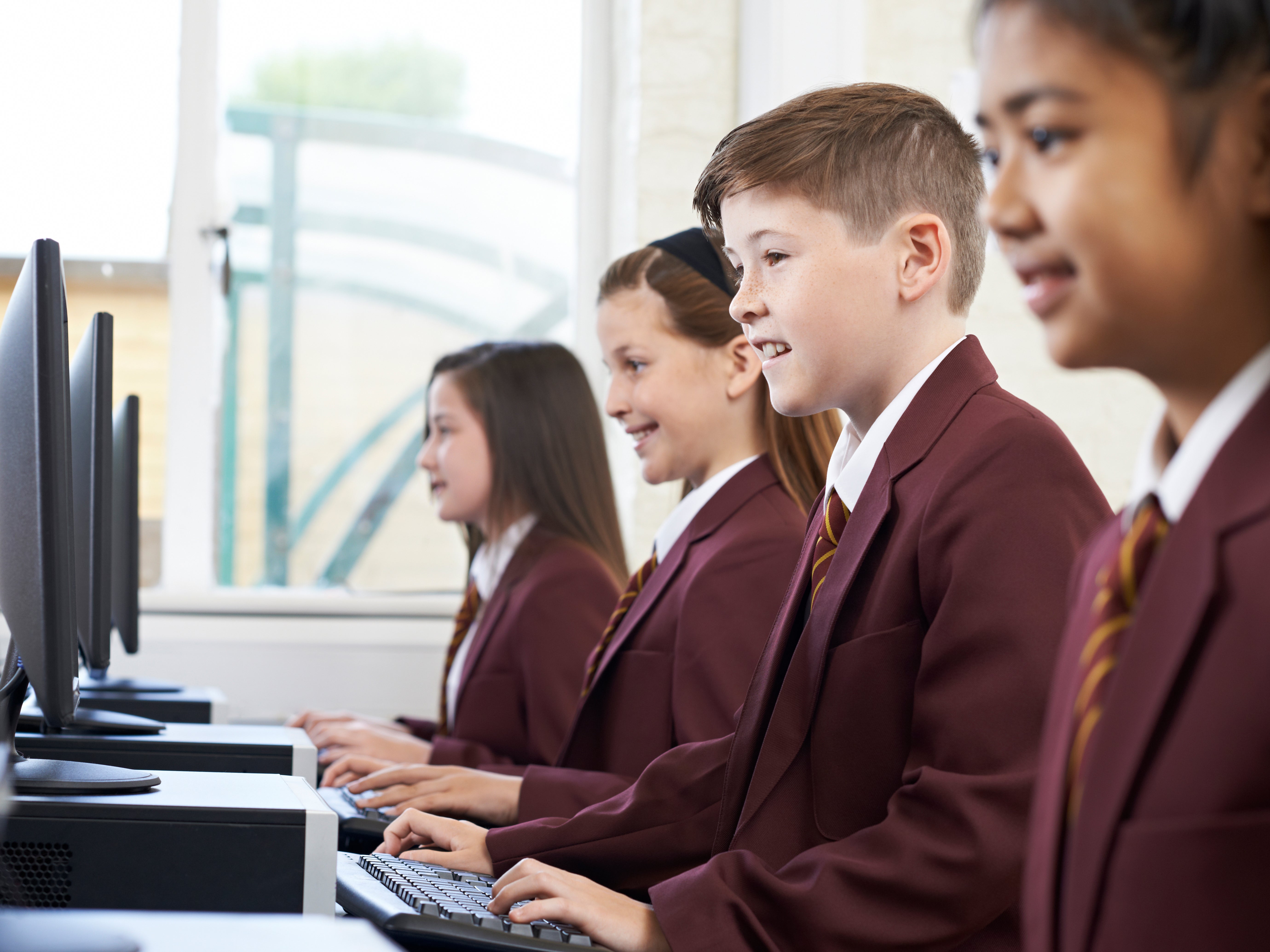Funding gap between state and private schools has widened, report finds
Education union leader says it ‘sticks in throat’ to see difference grow by ‘such huge extent’

Your support helps us to tell the story
From reproductive rights to climate change to Big Tech, The Independent is on the ground when the story is developing. Whether it's investigating the financials of Elon Musk's pro-Trump PAC or producing our latest documentary, 'The A Word', which shines a light on the American women fighting for reproductive rights, we know how important it is to parse out the facts from the messaging.
At such a critical moment in US history, we need reporters on the ground. Your donation allows us to keep sending journalists to speak to both sides of the story.
The Independent is trusted by Americans across the entire political spectrum. And unlike many other quality news outlets, we choose not to lock Americans out of our reporting and analysis with paywalls. We believe quality journalism should be available to everyone, paid for by those who can afford it.
Your support makes all the difference.The average private school fees are 90 per cent higher than spending per state school pupil, according to a new report that found the difference in funding had widened further.
The Institute for Fiscal Studies (IFS) found the gap between private and state school spending has doubled in just over a decade.
An education union said it “does stick in the throat” to see the gap widen “to such a huge extent”.
Private school fees were on average £13,600 for the last academic year, the IFS found.
By comparison, the total spending on state schools per student was £7,100 for the same year, according to the research institute’s report.
This meant the average private school pupil had £6,500 - or 91.5 per cent more - spent on them during the 2020-2021 academic year than the average peer at a state school.
Around a decade before, the gap was £3,100, or 39 per cent, the IFS found.
The research institute said private school fees had grown by more than 20 per cent after inflation since 2009-10.
Meanwhile, average spend per state school pupil had dropped by nine per cent in real terms.
Kate Green, the shadow education secretary, said school budgets have been “hammered” over the past decade and this was “holding children back”.
Geoff Barton from the Association for School and College Leaders (ASCL) said: “It is pretty outrageous that the government has cut funding in real terms to schools and colleges over the past decade while independent school fees have increased over the same period.
“The funding gap between the two sectors has always been there of course, but the fact it has widened to such a huge extent does stick in the throat.”
He added: “It means that while state schools and colleges have been forced to cut back on things like subject choices, pastoral support, and extra-curricular activities – and with secondary class sizes rising – independent schools have been able to improve their provision in all these areas.”
The new report comes shortly after Labour pledged to tax private schools £1.7bn in order to fund improvements to state schools at the party’s conference.
Luke Sibieta from the IFS, who was the report’s author, said: “Longstanding concerns about inequalities between private and state school pupils, which have come into sharp focus during the pandemic, will not begin to be easily addressed while the sectors enjoy such different levels of resourcing”.
The Covid pandemic saw most pupils told to stay at home for extended periods of time twice, while students have also not been able to go into school due to positive tests and isolation.
Recent analysis found the gap between remote learning and in-class learning appeared larger in schools with more disadvantaged pupils.
The government and charities issued hundreds of thousands of laptops to disadvantaged pupils to support them with remote learning for when they were unable to go into school during the pandemic.
But one study suggested a third of disadvanted students did not have access to a device needed for online work between May and November last year.
A Department for Education spokesperson said: “This government is providing the biggest uplift to school funding in a decade – £14 billion in total over the three years to 2022-23. This includes a £7.1 billion increase in funding for schools by 2022-23, compared to 2019-20 funding levels.
“Next year, funding through the schools national funding formula (NFF) is increasing by 2.8% per pupil compared to 2021-22. The NFF continues to distribute this fairly, based on the needs of schools and their pupil cohorts.”
Join our commenting forum
Join thought-provoking conversations, follow other Independent readers and see their replies
Comments